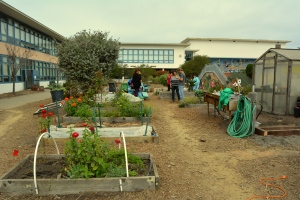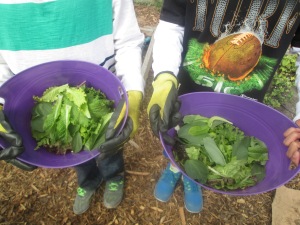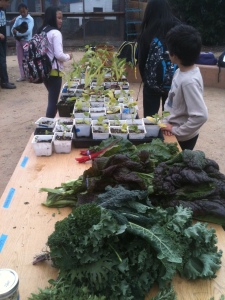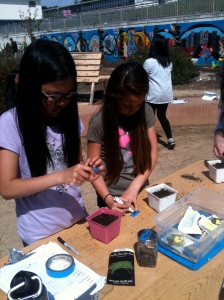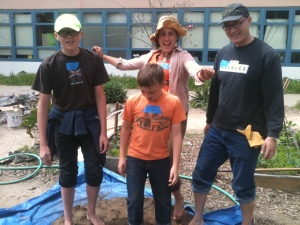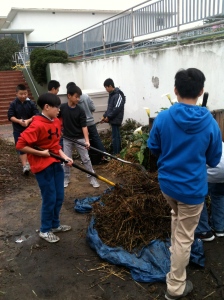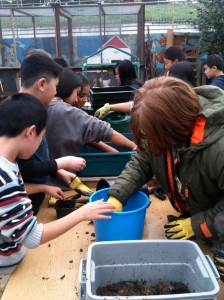We had a great turnout of students, parents, and other community members on Saturday for our Fall Volunteer Garden Workday!
Check out everything we did in just a few hours:
*Huge thank-you to HANNAH BERMAN, for these beautiful photos!

We even harvested these giant onions! *Tip: to grow big onion bulbs like this, really loosen your soil beforehand and add lots of organic material (like compost)
If you were able to stop by, thanks again! If not, catch us next time! Next volunteer day TBA
In the meantime, if you’re looking to volunteer, we always need help at our garden club days during lunch (Noon-1pm on Tuesdays and Thursdays)
Contact Miss Kasey to sign up at 413-663-4334 or kaywoot@gmail.com
*We will also be having a Garden Farmer’s Market on Thursday, October 29th after school between the school and the Ortega Library
All produce sold in exchange for a donation, including:
-Salad mix with cherry tomatoes
-Greens (kale, chard, sorrel)
-Herbs (thyme, oregano, sage, rosemary, Vietnamese Coriander, lemon verbena, mint)
-Flower bouquets
-Carrots
-Plant starts good for fall
-Also for sale, San Francisco raw honey for $10/half pound jar
*If you are not able to attend, please contact Kasey to set up a different time to get your garden goodies!
Thanks & see you next time 🙂


